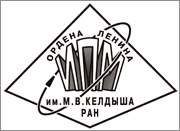|
This article is cited in 2 scientific papers (total in 2 papers)
Treating diffuse elements as quasi-specular to reduce noise in bi-directional ray tracing
S. V. Ershov, D. D. Zhdanov, A. G. Voloboy, M. I. Sorokin
Abstract:
In simulation of the light propagation the brightness of each ray is calculated based on the optical properties of the virtual scene objects which it interacts with. According to the optical properties these objects can be roughly subdivided into diffuse and specular. The Monte-Carlo based ray tracing methods which are commonly used in simulation calculate the brightness only for diffuse surfaces. When a ray meets a specular surface it is reflected (or refracted) until it reaches a diffuse surface where the brightness is calculated. In the proposed approach diffuse elements are further divided into “truly diffuse” and “quasi-mirror”. The most natural criterion for the latter is scattering in a narrow cone around a purely specular direction. A scene element can also be a superposition of both types when its scattering function is treated as the sum of a truly diffuse and quasi-mirror parts. The work shows how various components of illumination interact with quasi-mirror objects and describes how this is implemented in the bi-directional Monte Carlo ray tracing. The proposed approach allows to significantly reduce the stochastic noise for a number of scenes including those for which it is not possible to achieve good results with any settings of the standard method. This method is also applicable to the simulation of volume scattering treating the phase function of the medium as quasi-mirror. In this case the selection of quasi-mirror objects is by no means based on the character of the scattering distribution function. For volume scattering the medium is treated as quasi-mirror while the surfaces, even if their scattering distribution functions are narrower, remain «truly diffuse'. The article shows the advantage of this approach.
Keywords:
lighting simulation, Monte Carlo ray tracing, bi-directional ray tracing, noise reduction, bi-directional scattering distribution function.
Citation:
S. V. Ershov, D. D. Zhdanov, A. G. Voloboy, M. I. Sorokin, “Treating diffuse elements as quasi-specular to reduce noise in bi-directional ray tracing”, Keldysh Institute preprints, 2018, 122, 30 pp.
Linking options:
https://www.mathnet.ru/eng/ipmp2481 https://www.mathnet.ru/eng/ipmp/y2018/p122
|

| Statistics & downloads: |
| Abstract page: | 126 | | Full-text PDF : | 24 | | References: | 18 |
|




 Contact us:
Contact us: Terms of Use
Terms of Use
 Registration to the website
Registration to the website Logotypes
Logotypes








 Citation in format
Citation in format 
